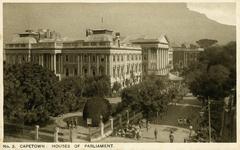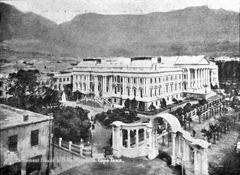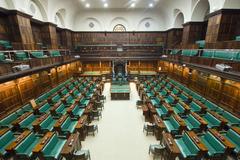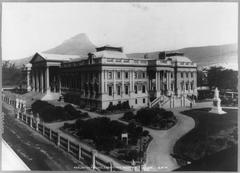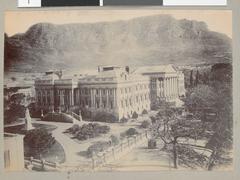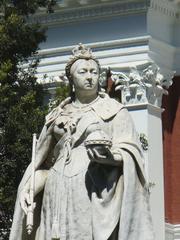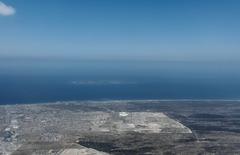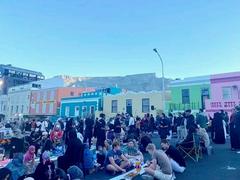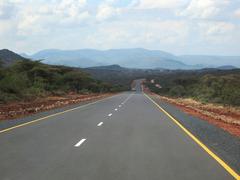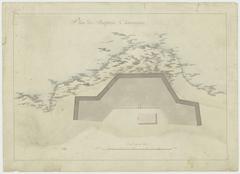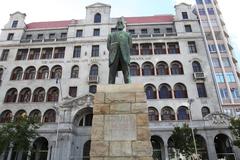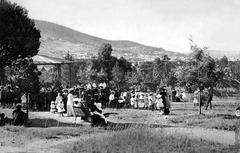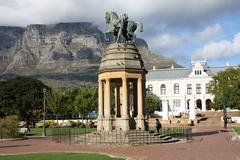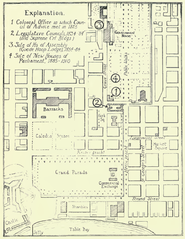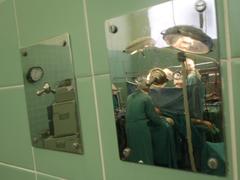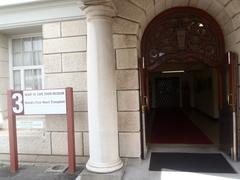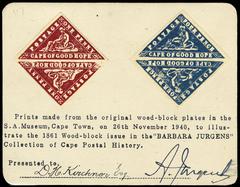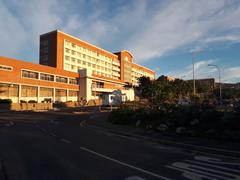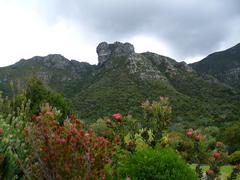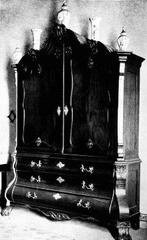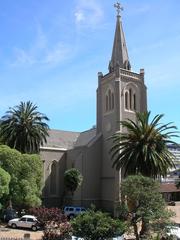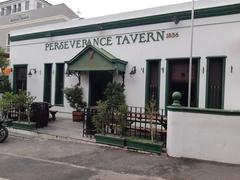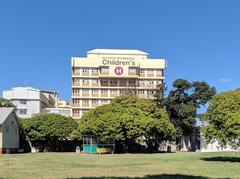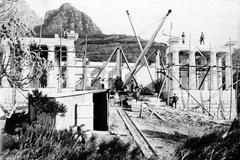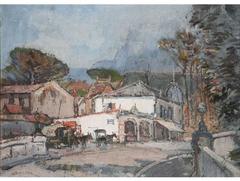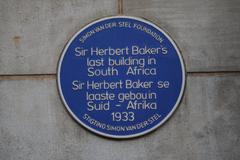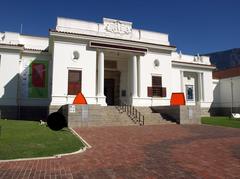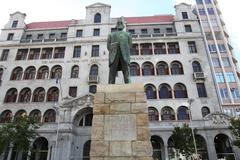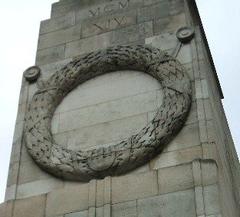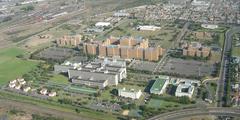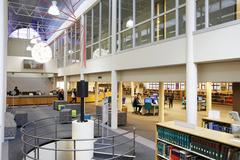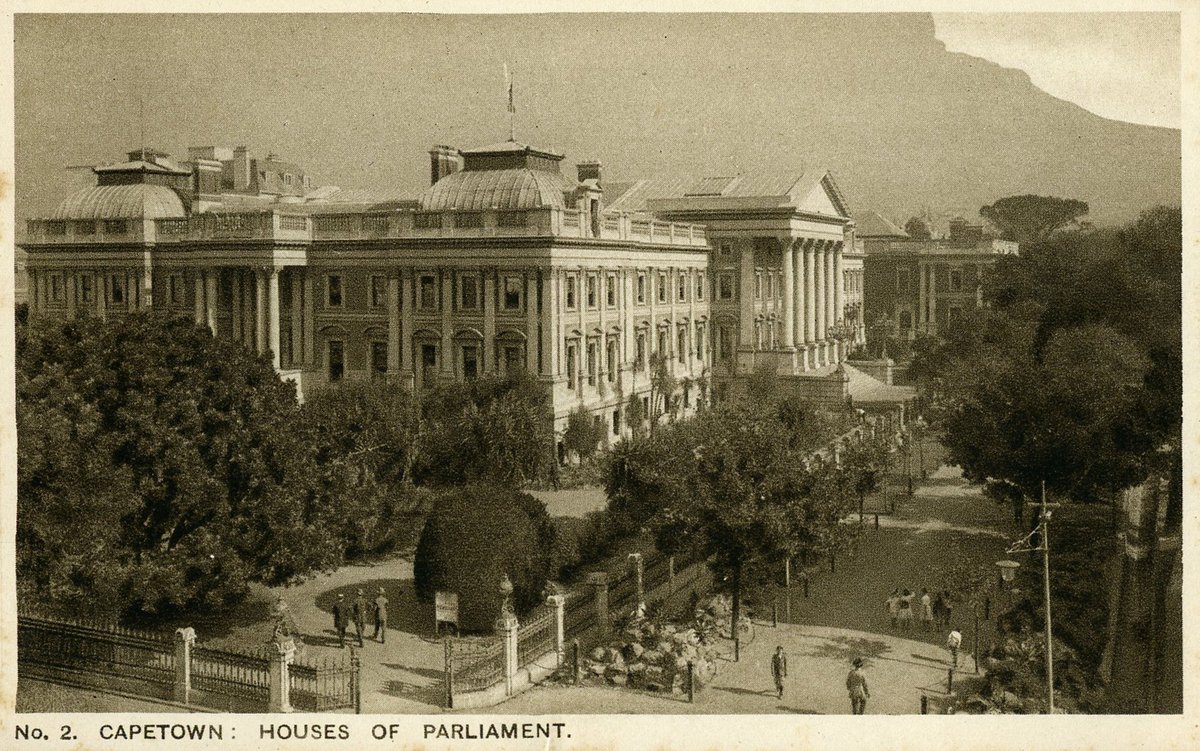
Houses of Parliament Cape Town: Visiting Hours, Tickets, and Historical Significance
Date: 14/06/2025
Introduction
The Houses of Parliament in Cape Town are an enduring symbol of South Africa’s political evolution, architectural heritage, and the nation’s ongoing journey toward democracy. Nestled at the edge of the historic Company’s Garden, this iconic complex has witnessed transformative milestones—from colonial governance and apartheid to the birth of a democratic South Africa. Today, the precinct serves not only as the legislative heart of the country but also as a cultural and historical attraction, drawing visitors eager to explore its architectural grandeur, rich art collections, and vibrant political history.
This comprehensive guide details the history, architecture, and significance of the Houses of Parliament, alongside practical information about visiting hours, ticketing, guided tours, accessibility, and travel tips. Whether you are a history enthusiast or a curious traveler, this overview will help you get the most out of your visit to one of South Africa’s most important heritage sites. For additional information, refer to Culture Connect SA, SA History, and the official Parliament website.
Table of Contents
- Early Foundations and Colonial Beginnings
- Architectural Evolution and Expansion
- Key Buildings within the Parliamentary Precinct
- Political and Cultural Significance
- Visiting the Houses of Parliament Cape Town
- Visuals and Media
- Heritage Status and Preservation
- The Modern Parliamentary Complex
- Frequently Asked Questions (FAQ)
- Conclusion and Call to Action
Early Foundations and Colonial Beginnings
The vision for a dedicated parliamentary precinct in Cape Town took shape in 1872, following the granting of representative government to the Cape Colony. Early legislative activities were held in venues such as the Good Hope Masonic Lodge’s banqueting hall (Culture Connect SA). By 1875, construction began on a new building designed by Charles Freeman. Due to design challenges and cost overruns, Henry Greaves took over the project, simplifying the original plans. The building was completed in 1885 at a cost of £220,000, far exceeding the initial budget (Culture Connect SA). This historic structure today forms the core of the National Council of Provinces (NCOP) building.
Architectural Evolution and Expansion
Over the decades, the parliamentary precinct has expanded to reflect changing political realities and architectural tastes:
- 1910 Union of South Africa Extension: Sir Herbert Baker designed an extension for the new House of Assembly, completed in the early 20th century. This venue became central to major legislative events, including the famous “Wind of Change” address in 1960 (Culture Connect SA).
- 1980s National Assembly (New Wing): A modern addition designed by Jack van der Lecq and Hannes Meiring was completed between 1983 and 1985, featuring a neo-classical style that harmonized with the original structures. This chamber now hosts plenary sessions, joint sittings, and significant national addresses (Culture Connect SA).
Key Buildings within the Parliamentary Precinct
The precinct features several architecturally and historically significant buildings:
- National Council of Provinces (NCOP) Building: The 1885 original, recently renovated, now houses the upper house of Parliament (Culture Connect SA).
- Old Assembly Building: Designed by Herbert Baker in 1910, it was damaged in the 2022 fire and is undergoing restoration (Rebuilding Parliament).
- National Assembly Building (New Wing): Built in the 1980s, this modern addition is the primary legislative chamber.
- Marks Building: An early-20th-century office block with advanced features for its time (Culture Connect SA).
- Africa House: Originally the British High Commissioner’s office, now home to parliamentary committees (Culture Connect SA).
- Good Hope Building: Former Masonic Lodge banqueting hall, later repurposed for parliamentary functions (Culture Connect SA).
- Tuynhuys: A historic residence, restored in 1968, and the site of the 1992 announcement of the end of apartheid (Culture Connect SA).
- Stalplein: Once the governor’s stables, now a memorial garden with the grave of the Unknown Soldier (Culture Connect SA).
Political and Cultural Significance
The Houses of Parliament are central to South Africa’s legislative process and national memory. The choice of Cape Town as the legislative capital—while Pretoria and Bloemfontein serve as administrative and judicial capitals, respectively—reflects a historical compromise and the complexity of South Africa’s political geography (SA History).
Key moments in South African history unfolded here, including the end of apartheid and the adoption of the democratic constitution. The precinct houses an extensive art collection, many pieces celebrating indigenous knowledge and traditional arts. The 2022 fire destroyed important artworks and technology (Rebuilding Parliament), reinforcing the site’s role as a repository of national identity.
Visiting the Houses of Parliament Cape Town
Visiting Hours
Generally, the Houses of Parliament are open to visitors Monday to Friday, 9:00 AM to 4:00 PM. Access may be limited during restoration, special events, or public holidays. Always check the official website for current hours.
Tickets and Guided Tours
Entry is free, but guided tours require prior booking. Tours last 60–90 minutes and cover key chambers and heritage sites. Group and school tours are available with advance notice.
Accessibility
The complex is wheelchair accessible, with ramps and elevators in key buildings. Visitors with special needs should contact the Parliament Visitor Centre in advance.
Travel Tips
- Arrive early for security screening
- Bring valid photo ID
- Photography is permitted in designated areas
- Nearby landmarks include Company’s Garden, the South African National Gallery, and the Castle of Good Hope
Special Events
Major events, such as the State of the Nation Address, may restrict access and increase security.
Visuals and Media
- Neo-Classical Facade: The Parliament’s grand entrance with Corinthian columns
- NCOP Chamber Interior: Ornate woodwork and decorative plaster
- Tuynhuys: The historic residence and site of significant political announcements
Virtual tours and high-quality images are available on the official Parliament website.
Heritage Status and Preservation
The parliamentary precinct is a recognized heritage resource of exceptional national significance under the National Heritage Resources Act (Rebuilding Parliament). Restoration following the 2022 fire is ongoing, with debates about whether to replicate original structures or introduce contemporary elements, much like Germany’s Reichstag (Culture Connect SA).
The Modern Parliamentary Complex
Today, the precinct houses Members of Parliament and approximately 1,500 staff providing essential support services (Rebuilding Parliament). The complex is a living institution, continually adapting to South Africa’s evolving democracy and societal needs.
Frequently Asked Questions (FAQ)
Q: Are there entrance fees?
A: No, entry is free. Guided tours require advance booking.
Q: What are the visiting hours?
A: Monday to Friday, 9:00 AM to 4:00 PM. Check the official site for updates.
Q: Is it wheelchair accessible?
A: Yes, with ramps and elevators for visitors with mobility needs.
Q: Can I take photographs?
A: Yes, in designated areas, but restrictions may apply in certain chambers.
Q: How do I book a tour?
A: Through the Parliament Visitor Centre; details are on the official website.
Conclusion and Call to Action
The Houses of Parliament in Cape Town embody the nation’s political evolution, architectural splendor, and commitment to democracy. Despite recent challenges, ongoing restoration efforts aim to honor the site’s storied past while shaping a space that reflects South Africa’s dynamic identity. As a visitor, you can experience this living institution, engage with its history, and explore nearby heritage sites for a richer understanding of Cape Town’s legacy.
Plan your visit today:
- Download the Audiala app for interactive audio tours and detailed guides
- Check the official Parliament website for updates
References and External Links
- Culture Connect SA
- SA History
- Official Parliament Website
- Rebuilding Parliament
- BBC News
- SA-Venues
- Wanderer Tours & Travel
- EWN
- South Africa.net
- SAHRA
- BusinessTech
- News24
- TheSouthAfrican.com
- Discover Cape Town
